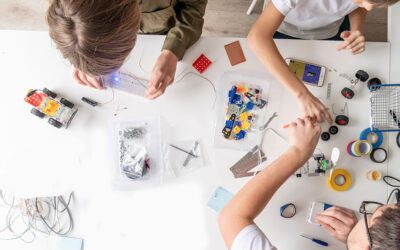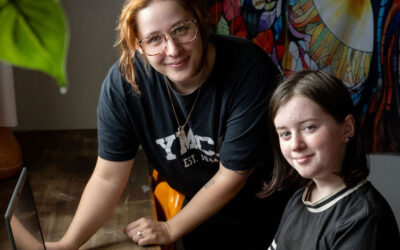As education practices shift towards a more holistic style of learning, many schools are looking to psychology to build positive classroom environments. Children are unique; they have their own way of understanding and applying information, which makes a one-size-fits-all approach to teaching and education impossible.
Throughout south-east Queensland, a number of schools are using psychology practices to underpin their school culture. In doing so, children are becoming better equipped to make good choices and be happier into adulthood.
Choice Theory
Sunshine Beach State Primary School started using William Glasser’s Choice Theory as its psychological base in 1994. In 2003, the school became the first Glasser Quality School in Australia.
A Glasser Quality School primarily functions in three ways. First, it actively builds quality relationships. Then it provides a need-satisfying environment. Finally, it encourages all learners and staff to achieve their potential. It’s helped teachers, staff and students at the school better understand behaviour.
Dr William Glasser was an American psychiatrist. In his book, Choice Theory: A New Psychology of Personal Freedom he describes traditional schools as engaging in ‘schooling’, which he says “has no real value for anyone including students in the real world”. He says Choice Theory shifts the definition of and desire for success to the student. Teachers and staff become collaborative leaders in empowering students to reach their highest potential. Families who also learn Choice Theory allow the education of the child to continue at home.
Dr Glasser says Choice Theory offers us a way to understand how our behaviour is motivated internally and why it drives us to meet our needs.
“All through our lives we make choices… We make choices that help us get along with people in our lives, and we make choices that harm us,” Dr Glasser writes. “In Choice Theory, we want to make mentally healthy choices… We believe that there are good things to choose.”
Putting principles into practice
In practice at Sunshine Beach State School, the impact of Choice Theory was significant.
“We saw a huge change in the school,” Gerard O’Brien says.
As a member of the Student Support and Wellbeing Teams at both Sunshine Beach State and Peregian Beach schools, Mr O’Brien has been applying Dr Glasser’s ideas since being introduced to them in 1993.
“We were able to connect with those kids we had issues reaching; we were able to build better relationships, teachers were happier, families were happier and learning outcomes jumped through the roof.”
He says relationship building is at the core of Choice Theory. It brings with it a common language that is used throughout the school. Everyone knows what is meant when they talk about ‘filling a bucket’ and all the teachers are on the same page.
“By looking at what happy people do and think, and speaking to each other in a common language to achieve this, we can help kids grow towards those things and think those things,” Mr O’Brien says.
How does Choice Theory work?
Rather than forcing kids to learn and behave, and using punishment to achieve this, Choice Theory works from a different angle. Instead of an environment based on a coercive culture, where the aim is to get the kids to do what the teacher says, this theory focuses on self-directed learning.
“The kids manage themselves, their behaviour and their learning,” Mr O’Brien says. “We are helping kids get to the point where they are helping themselves; their own their behaviour.”
He says Choice Theory gets the students to recognise where their behaviour is coming from. They can then understand what is or is not acceptable, while a teacher works with them to help them find another way to get what they want. “Someone is there to help them find a better path or make a better plan.”
Following the success of the methodology in the school, Mr O’Brien started offering Parenting with Choice workshops, that have been extremely popular.
Some of the core concepts of Glasser’s Choice Theory include:
- removing feat and coercion
- doing quality work is deeply satisfying
- quality relationships enable quality learning
- self-evaluation and co-verification lead to quality learning outcomes
- operating this way removes barriers to learning.
Positive psychology
With 150 schools across south-east Queensland and more than 70,000 students in its care, Brisbane Catholic Education is another organisation taking a holistic approach to every student’s development. It’s incorporating principles of positive psychology in its approach to supporting student wellbeing and learning.
BCE’s senior manager for Inclusive Education and Student Wellbeing, Kathy Shelton, says strength-based learning is a starting principle of positive psychology.
“Rather than trying to fix something, we look at starting at the point of what students can do and build from there,” Ms Shelton says.
Drawing on research from leaders such as Carol Dweck and Michael Fullan, BCE’s foundation is based on four key principles. These include developing a growth mindset, high teacher expectations for every student, explicit teaching of self-regulation and motivation, and using feedback and goal setting to improve learning. These principles underpin both its pedagogy and teaching framework.
It’s strategy is based on a whole school approach, providing teachers with an excellent learning and teaching strategy that brings the psychology to the classroom.
“Teachers need to understand the elements, as they are working closely and directly with the students,” Ms Shelton says.
BCE has worked hard at placing teachers and student wellbeing in the curriculum rather than as a separate program. This makes it an integrated part of what teachers are doing in the classroom.
Underpinning that strategy is student engagement in learning and positive relationships with their peers and their teachers.
“We look at their engagement in learning, their progress in learning and their wellbeing.”
Psychology supports core values
The combination of these psychology principles, a strong pastoral care program and the Catholic philosophy, ensures the organisation’s core values flow throughout the schools network.
“We believe every person should be fully supported to reach their full potential,” Ms Shelton says. “We have programs for social justice and you’ll find lots of examples of students helping others in the community. Students are fully supported in their own spiritual and personal development.”
Over time, BCE has put more resources into providing professional learning for teachers and providing schools with school-based guidance counsellors.
“Every school in our system has a school-based guidance counsellor, many whom are psychologists, providing proactive and leading approaches. [This provides] more targeted and individual support for students and families when needed,” she says.
She says the changes have had a positive effect in the schools.
“We are seeing a very positive impact in student learning growth, but the impact is because we have an integrated approach.”
She says there is a focus on improving literacy and numeracy, however it’s not separate from students’ engagement and wellbeing.
“We want students to be engaged in their learning and have positive relationships where they feel connected. There is positive impact because the two things go together,” Ms Shelton says.
Making changes in line with students’ progress and behaviour
With the systems in place, BCE has been able to collect a large amount of data to perform detailed analyses of student progress and student behaviour. This reveals patterns and trends, making it possible to target resources towards areas of need.
“We do collect a lot of data. We have a very detailed analysis of students’ progress in learning combined with student behaviour support policy and processes. This reflects students’ engagement in their learning,” Ms Shelton says.
“We can look at data and notice that incidents are occurring more during transition between classrooms. We can then structure how students are moving around school – a preventative proactive approach to behaviour.”
The large network of schools working together, allows BCE to share a common language across the entire group.
“We are a system of schools and we are able to get that common language and shared approach across the schools,” she says. “[This provides] a consistent approach to student behaviour, pastoral care, and excellence in teaching.”


